EXHIBITION PRESS
• Mousse Magazine
• Mousse Magazine




PRESS RELEASE
Kendra Jayne Patrick is thrilled to present Eva & Franco Mattes’ first solo gallery exhibition in Switzerland. Since the early nineties, the duo are renowned for prescient artworks that materialize the exchanges between the visible and invisible infrastructures which compose our entirely internet-ed lives. From Net Art’s inception - and indeed, the Mattes’ work is foundational to any understanding of the genre - their sculptural/and/or/video objects rework familiar hard- & softwares to reveal how the omnipresent sequences of zeros and ones in our digitized society shape notions of labor, time, one another, and self. The Mattes’ objects have always borne witness to the dystopian potential of total visibility. At the same time, the works themselves are methods - however macabre, funny, or questionable - for subverting the precarious conditions that such intensity of exposure creates. The works in J8~g#|;Net. Art{-^s1 come together as a signal of the new strategies we are, consciously or not, adopting to deal with what are increasingly overbearing technologies and digitally-fueled exhaustion with each other.
It is an enticing thought, that collectively logging off would alone resolve the overwhelm. In truth, we are so connected to one another because we want to be. Still, some of the current-most cultural outputs suggest we’re hunting for more organic and enjoyable means of being so intensely mediated and connected, and responses range from the tragic to the farcical.
Most recently, we’re putting together semi-legible jumbles of letters on screens, not unlike the title of this show, in order to communicate meaningful political opinions with one another without being kicked off of our Socials. We are swarming away from dating apps. We are recording ourselves sleeping on TikTok in opposition to acting out waking-life scenarios for one another. We’re moving digital conversations onto encrypted forums, and cracking (a lot of) meme jokes about how swiftly the overlords would punish us should they see what we’re up to. We are tempted by all kinds of nostalgia. This exhibition applies to our conundrum works from their ongoing investigations of cat meme culture on social media (2010-present); Freedom (2010); Portraits (2006-2007), Abuse Standards Violations (2016-2021); Personal Photographs - Circuits (2022-present), and J8~g#|;Net. Art{-^s1 (2024), allowing the Mattes’ uncannily subversive art to broaden our imaginations.
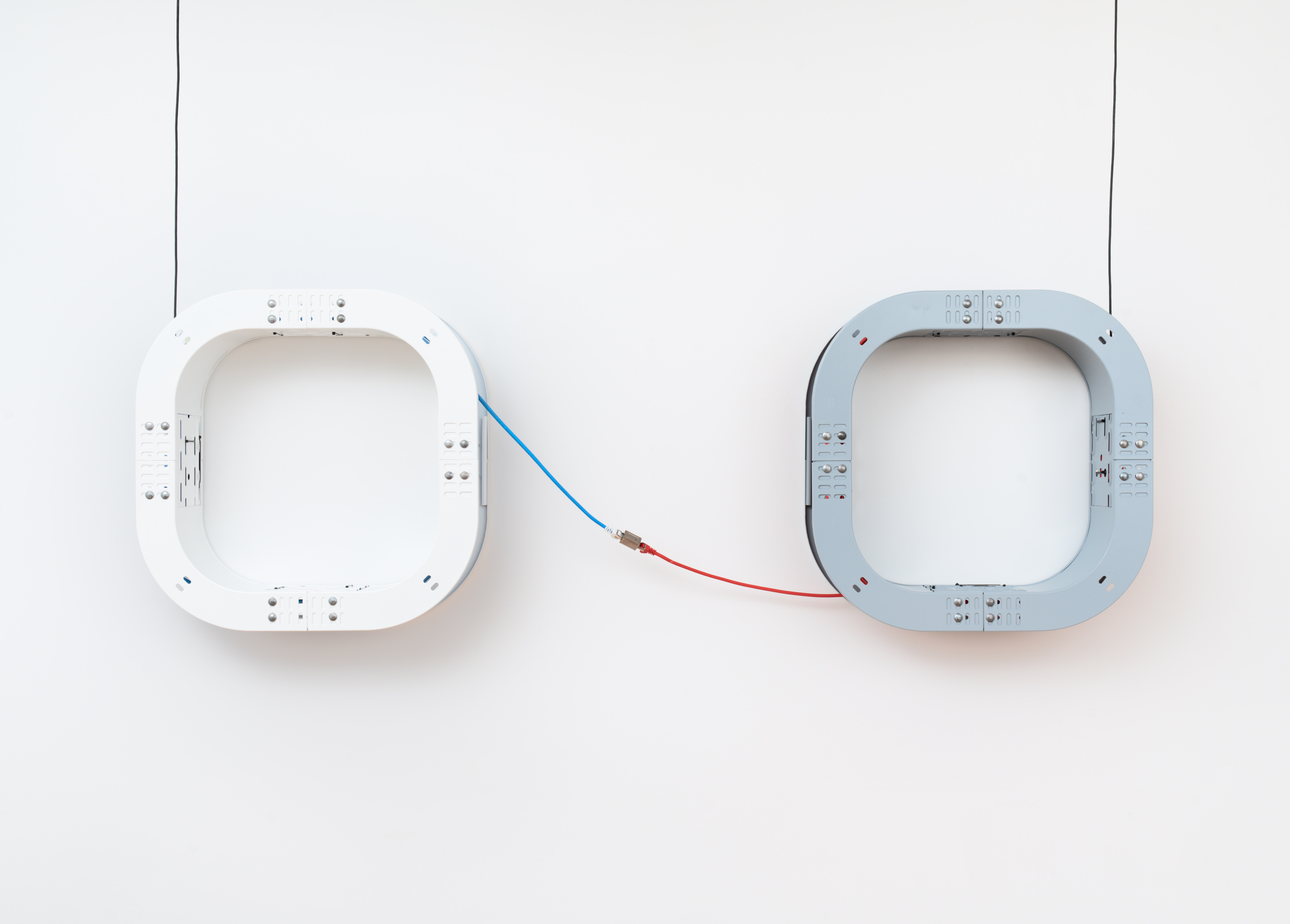
J8~g#|;Net. Art{-^s1, 2024
Powder coated customized cable tray, ethernet cables, 1 HTML file, single-board computers, metal cases, micro SD cards, USB flash drives, custom software
Each 55 x 55 x 17 cm
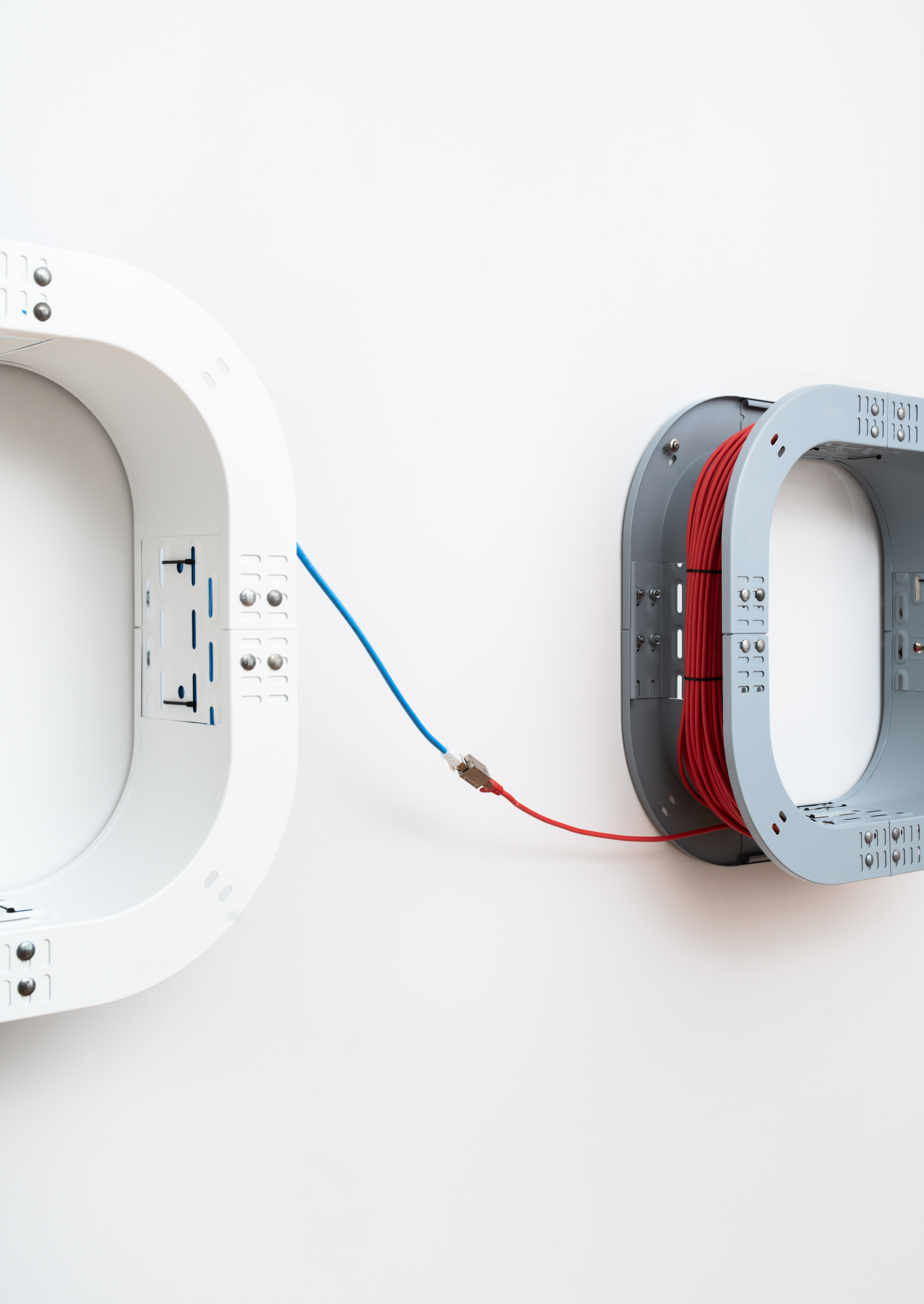
J8~g#|;Net. Art{-^s1 (2024) is the centerpiece of an exhibition about what it might look like to revise our techno-social contracts at this time. Departing from a larger series of works called Personal Photographs - Circuits (2022-present), J8~g#|;Net. Art{-^s1 consists of (fraternal) twin circuit sculptures that each possesses its own small computer. Forever bouncing back and forth between the coils of cables connecting them to one another is the email credited with coining the term Net Art. Mythology surrounding this email says that Net Art pioneer Alexei Shulgin sent an email regarding the subject of art and internet to his peer, Vuk Ćosić. The email was drafted in Cyrillic, which in transit got scrambled into nonsense, and as the story goes, the only legible sequence read
“…Net.Art…”
The work picks up on nostalgia for a bygone internet era. From 2024, the internet on which the Matteses came of age seems fittingly described as utopian. Private servers, email groups, and chat rooms were primary means of socializing, unburdened by the Timeline. We hear tales of early internet adventurers, aiming in earnest for a community out of step with the manufactured loneliness of late capitalism. Nostalgia is rightfully criticized for its tendency towards escapism at a time when we should all be paying close attention. Still, powerful combinations of memories and fantasies about times when we glimpsed the best in ourselves always justify a bit of yearning.

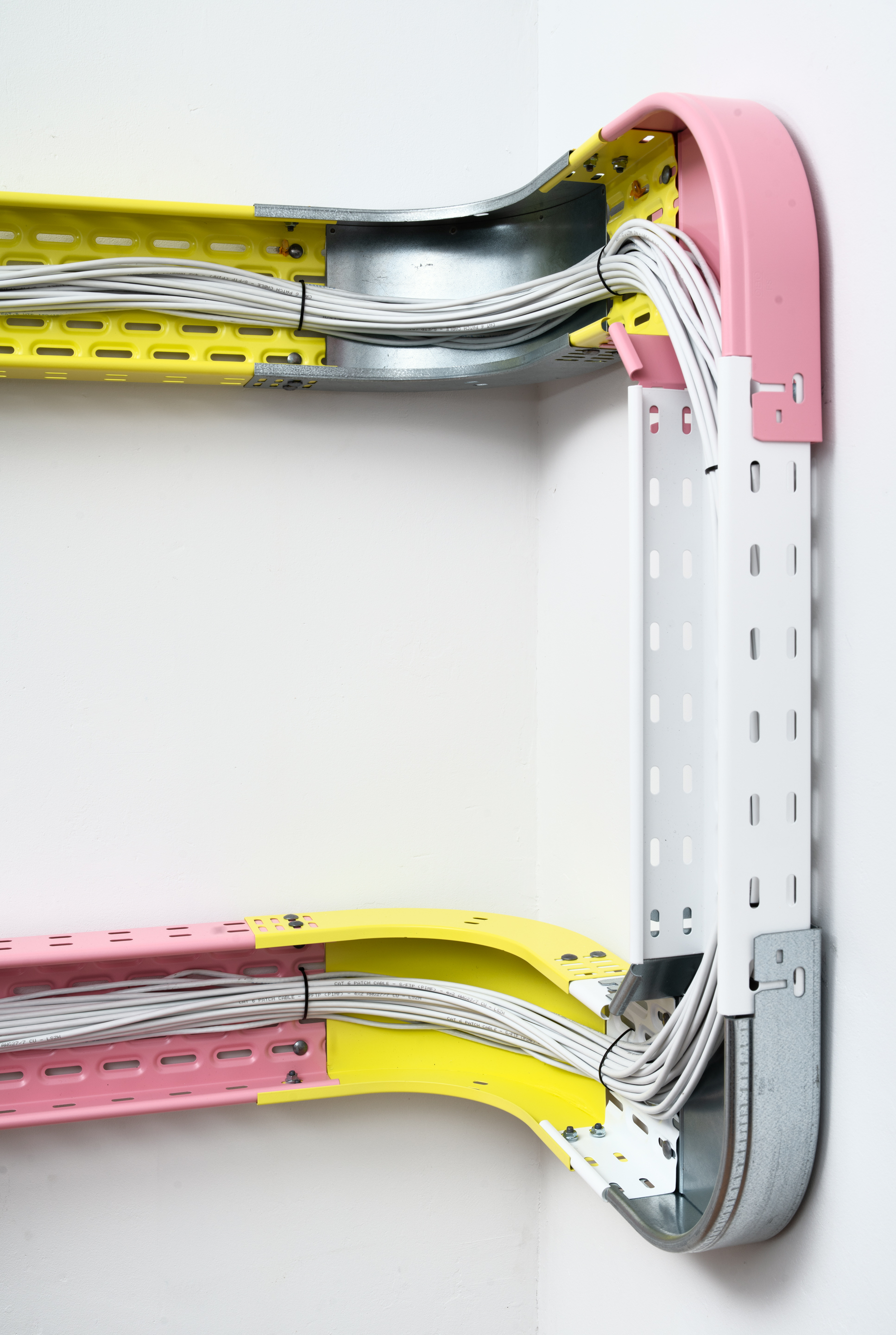
Personal Photographs June 10 2010, 2024
Powder coated customized cable tray, ethernet cables, 48 digital images, single-board computers, metal cases, micro SD cards, USB flash drives, ethernet coupler, custom software
142 x 80 x 54 cm
Personal Photographs - Circuits (2022-present), is a body of work tinged with a modern sort of romance. Like other works in the series, Personal Photographs June 10, 2010 (2024) contains one day’s worth of photographs from a phone in the artists’ personal archive. It is a circuit tray sculpture wherein a small computer circulates their photos endlessly by means of cable coiled many times around it. We’ve wired society in a way in which the circulation of an image has been split from - and is now more important than - its specific aesthetic features. Here, however, circulation is made tangible again; made personable; forever looping memories through candy-colored, powder-coated objects. We are never to apprehend the pictures, but we know where they are, and importantly, where they aren’t.
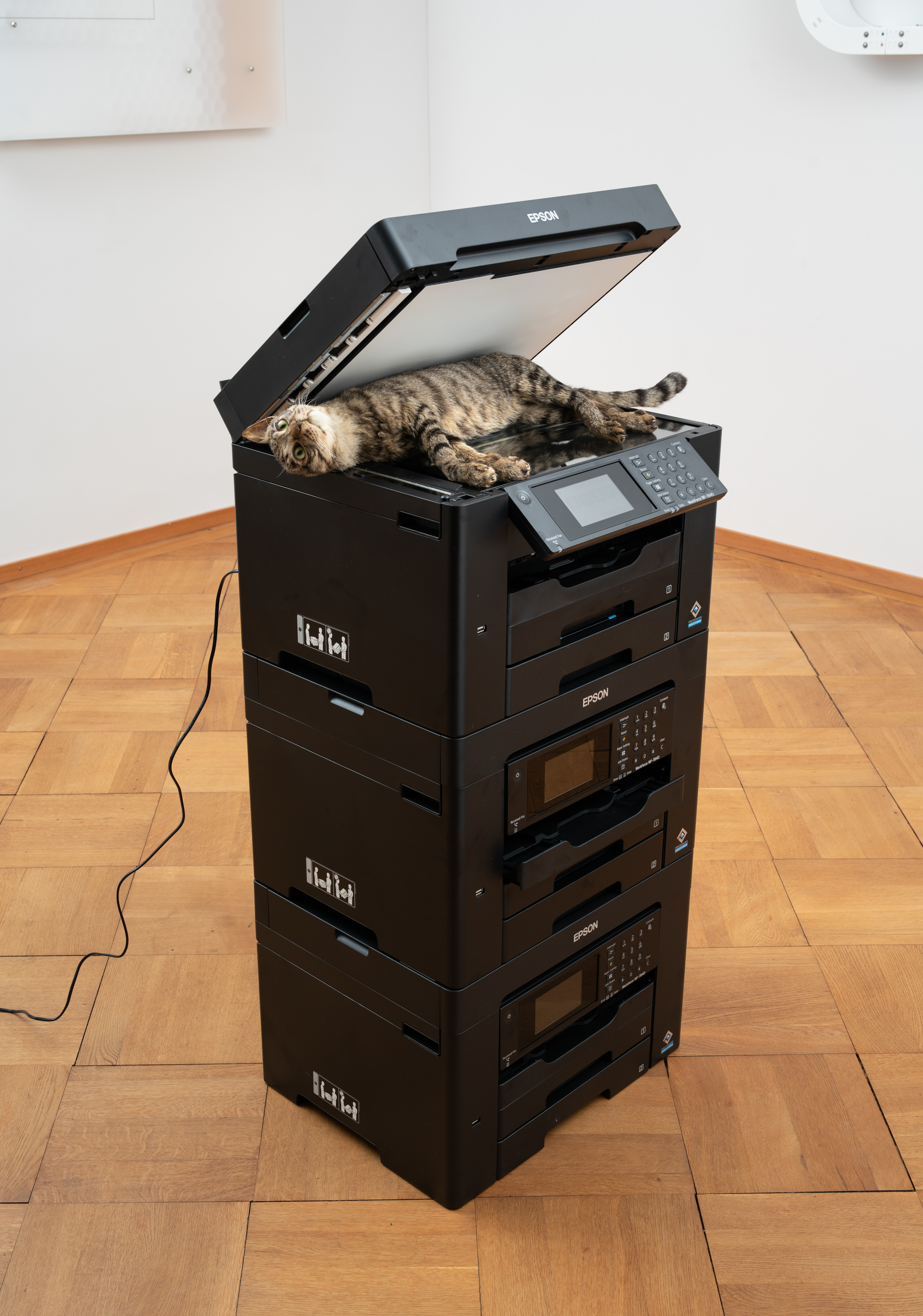
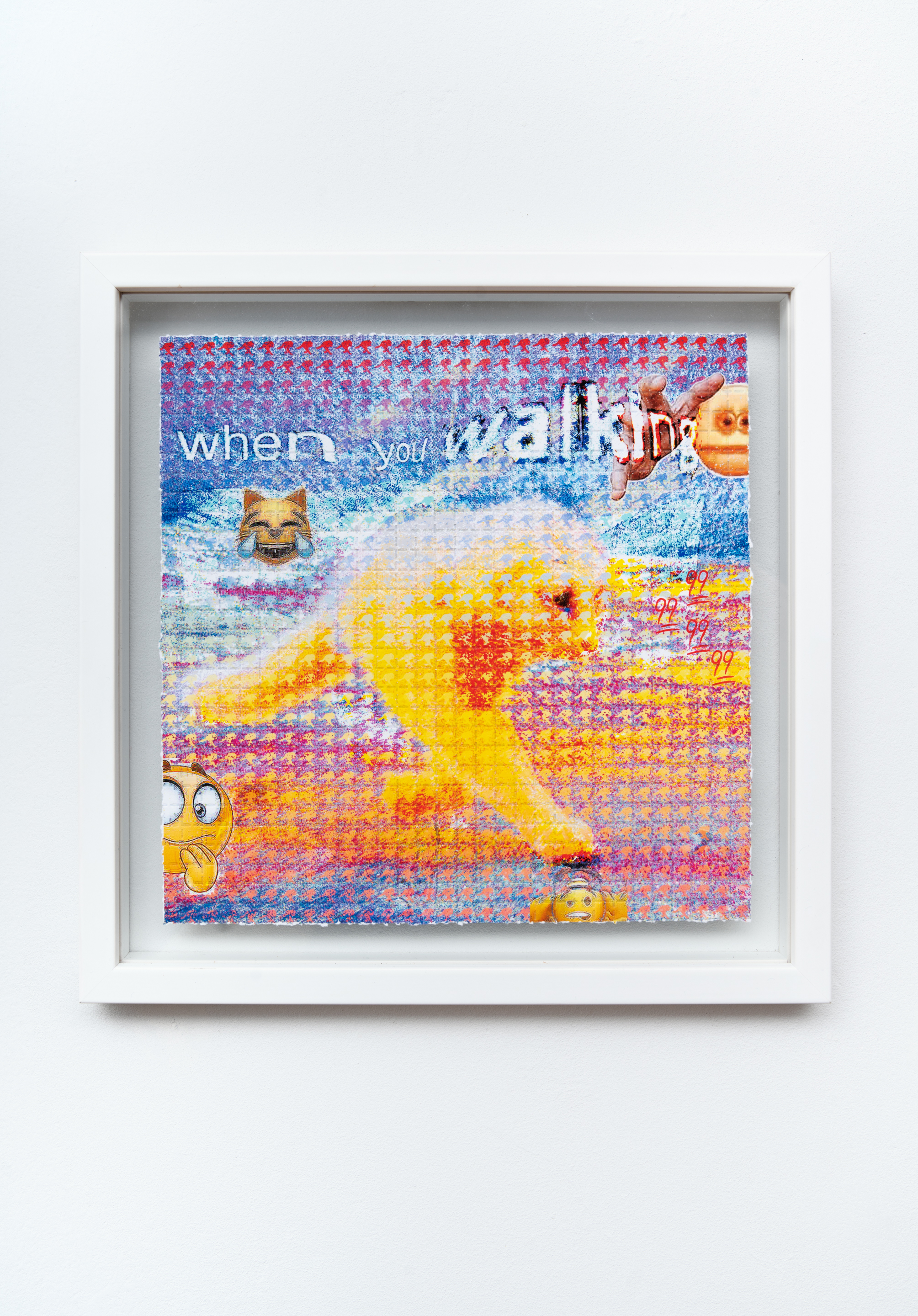
Taxidermy cat, printers, A3 paper
70 x 45 x 140 cm
Deep Fried Half Cat, 2024
Print on un-dosed blotting paper with 900 perforated tabs using plant based food grade ink
19 x 19 cm
Print on un-dosed blotting paper with 900 perforated tabs using plant based food grade ink
19 x 19 cm
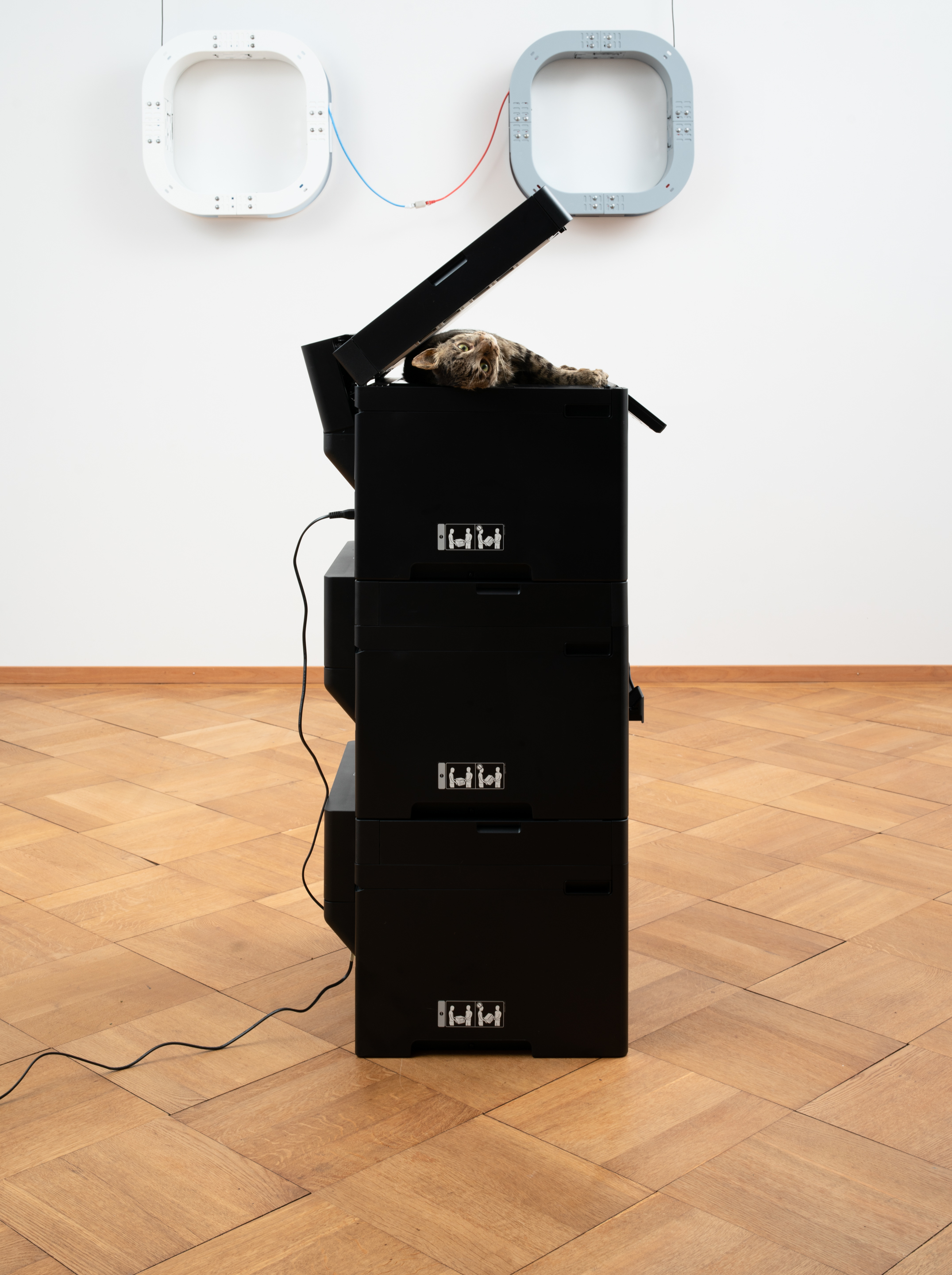
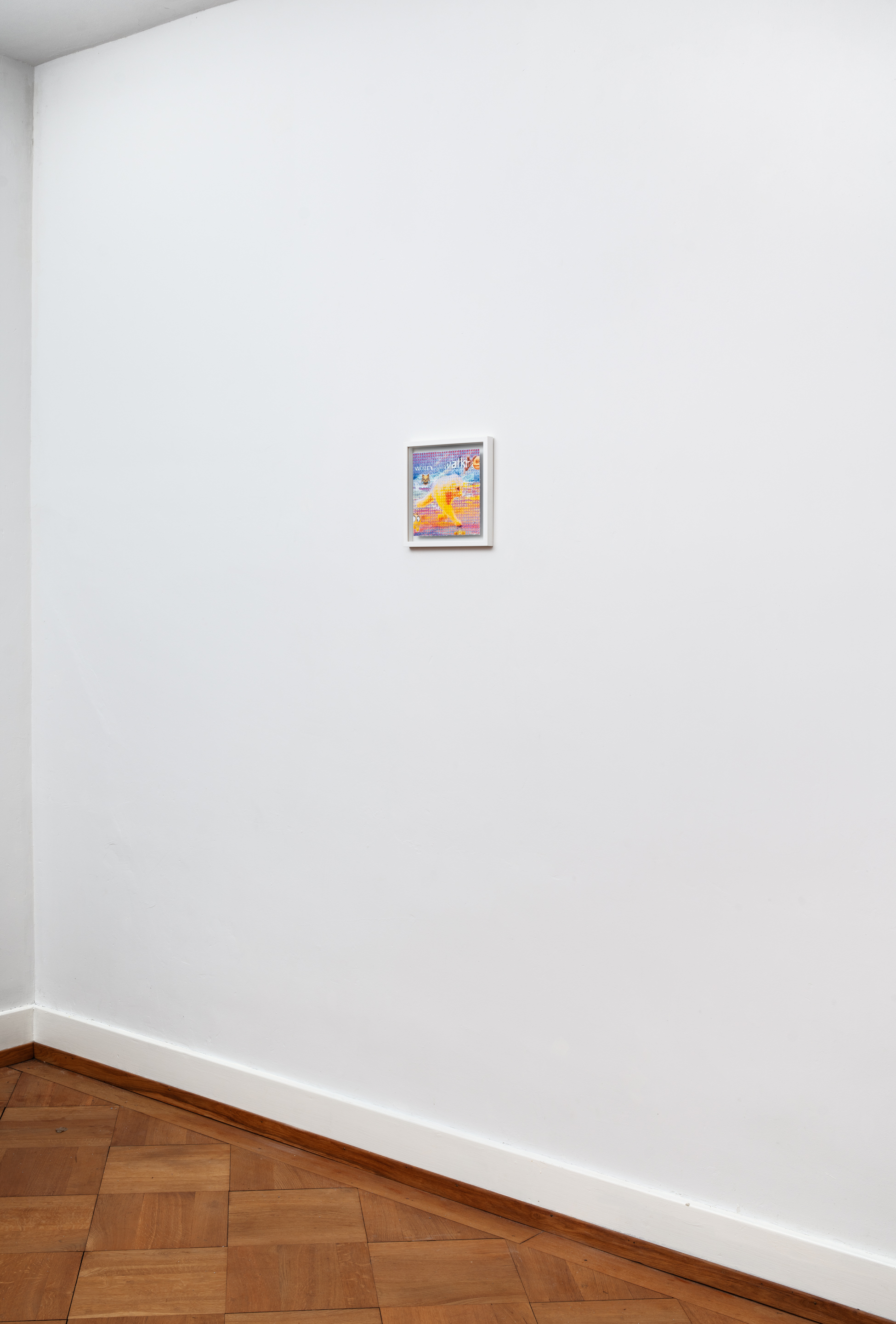

Copycat (2024) & Deep Fried Half Cat (2024) bring to the exhibition the Mattes’ long-standing curiosity about our cat content fanaticism, as it is annually ranked among the most popular social media content. “Since 2010, they have been using different avatar versions of the animals - especially ones that circulate in culturally crystallized form as memes - to point out, question, or criticize what we project into this space of multiplied communication.”** Copy Cat relates to imagery of cats sitting on ATMs in Bodegas, copy machines in offices, and otherwise odd and warm places to rest. Printed on LSD blotter paper (whose inventor was Swiss), Deep Fried Half Cat toys with early cat meme emojis and imagery, including that of their first aesthetic forays into this series, Ceiling Cat (2016). With the sixth mass extinction underway and humanity engaging in peak industrial animal farming, we remain compelled to digest our experiences through our kinship with cats, finding refuge in their flippant attitudes towards our civilizatory desires.

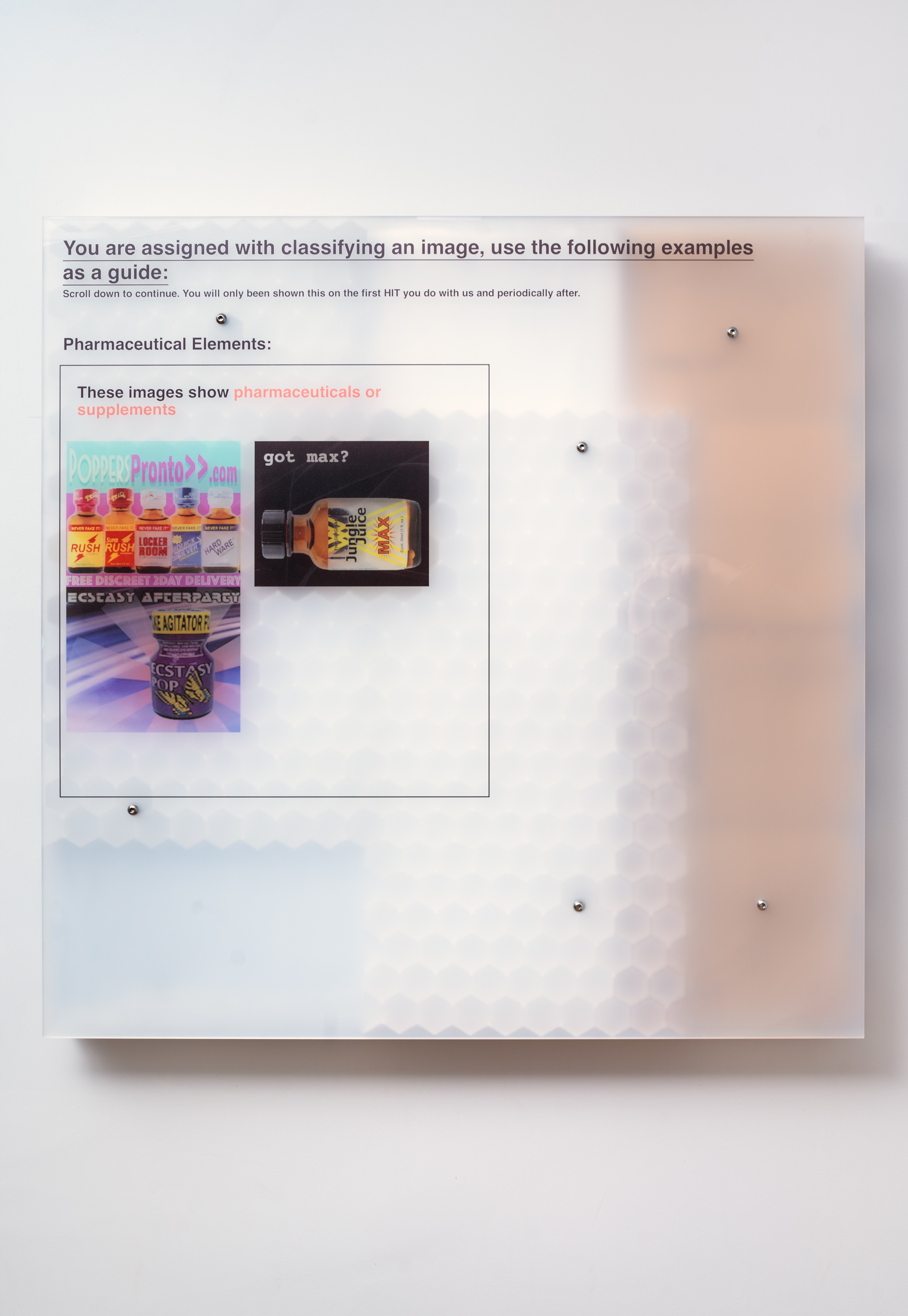
ABUSE PANEL: POPPER, 2016-2018
UV print on plexiglass, various insulation materials, spacers, screws
100 x 100 x 10 cm


ABUSE PANEL: CLEAN, 2016-18
UV print on plexiglass, various insulation materials, spacers, screws
100 x 100 x 9 cm
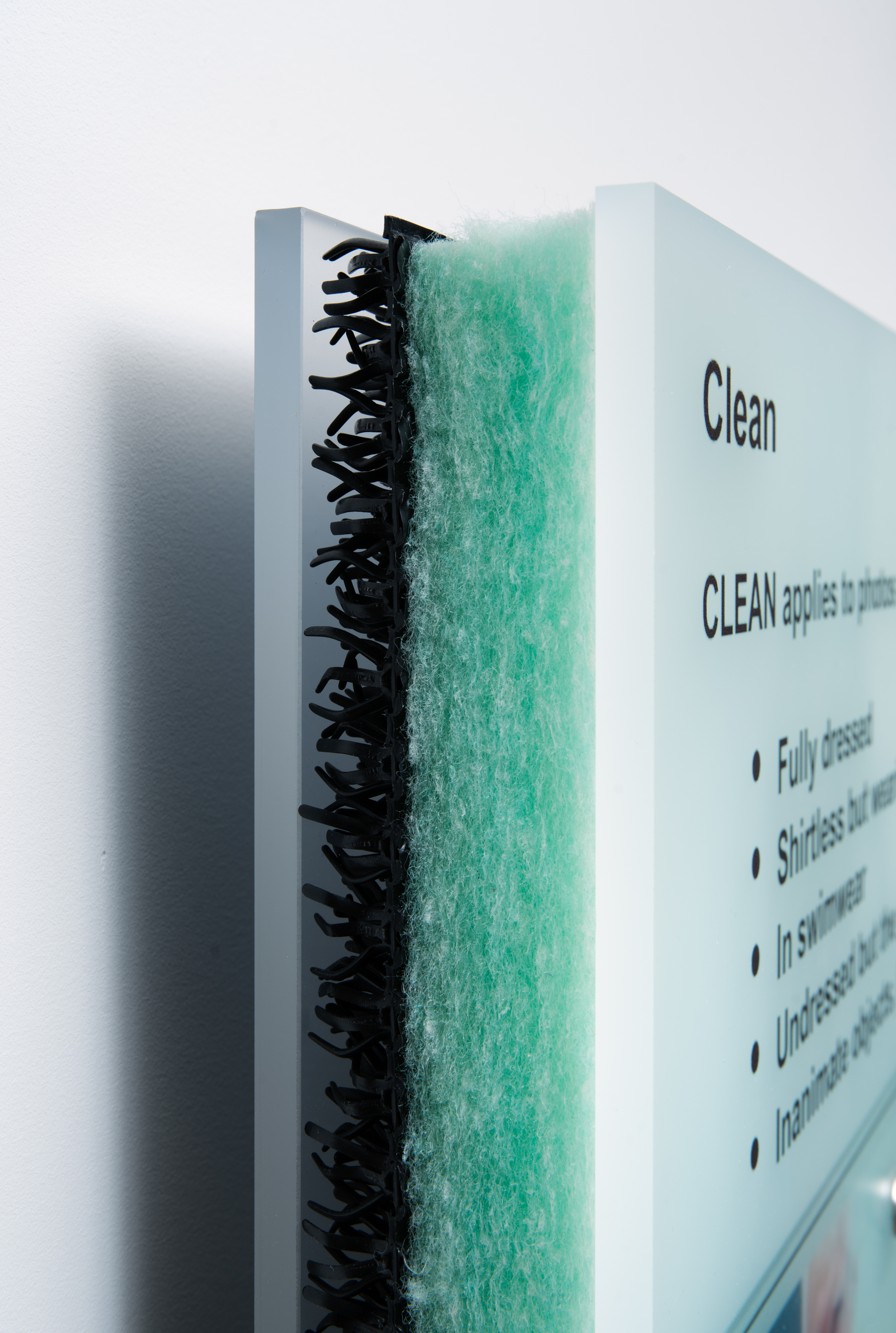
Abuse Standards Violations (2016-2021) are fashioned from instruction manuals leaked by Big Tech’s censorship-workers. Here they are printed large on acrylic, sandwiching various sorts of filtration and isolation panels. In ABUSE PANEL: CLEAN (2016-2018), we learn that Meta & Google designate topless white men as dominant examples of content that doesn’t want scrubbing from the Clearnet. lmao, indeed. ABUSE PANEL: POPPER (2016-2018), meanwhile, permits images of a certain popular party favor to circulate online as it would at a club, a rare and suspicious example of grace extended to us by the Fun Police.
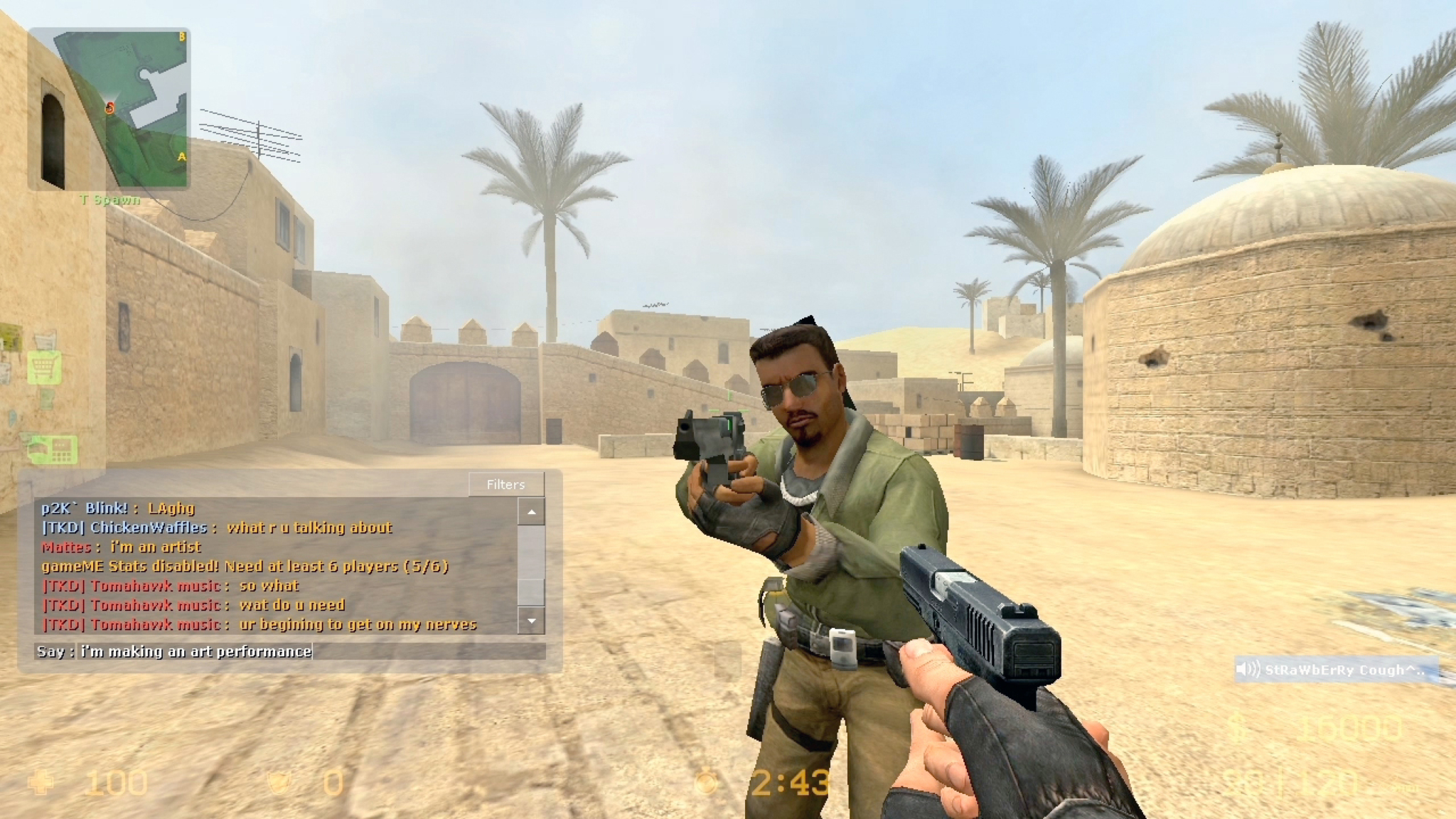
Freedom, 2010
Single channel video
8 mins 56 sec
Freedom (2010), is a work in which Eva Mattes operates a soldier avatar in a 2000s-era first-person shooter game set in the Middle East. Made in the era between the end of the Bush Doctrine and the beginning of Obama’s, she roams around Counter Strike’s fantasy desert trying to convince real and video game dudes not to kill her so that she can complete her in-game performance piece. In our current era of artistic censorship - unfamiliar to those of us born after 1980 - this silly act of resistance is timely. The video addressees the Bartleby-like*** stance of the artist vis-a-vis the algorithmic rule-set, and the logic of war. A refusal to engage with the tenets of the game meets with a concerted refusal to leave or look away.

These last days and months, as the West absorbs vividly documented mass slaughter of black and brown people the world over, this piece has taken on a new valence. In showing a work like this at our gallery at this time, we are acutely aware of two audiences: one that shouldn’t continue to exercise the privilege to look away, and one that absolutely must be able to do so. Uneasily, we are furnishing the display with a remote and a trigger warning to give viewers the right to switch off.
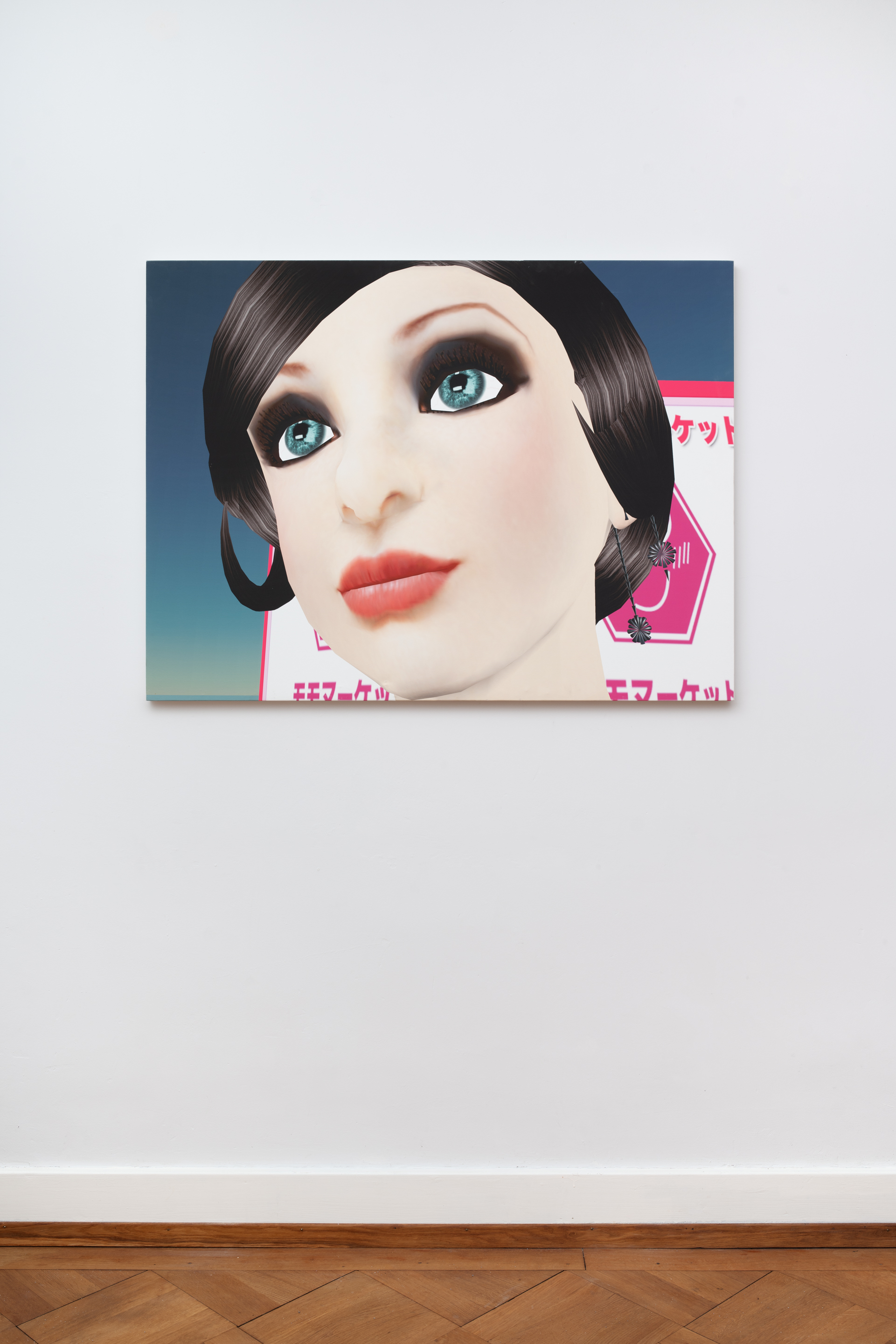
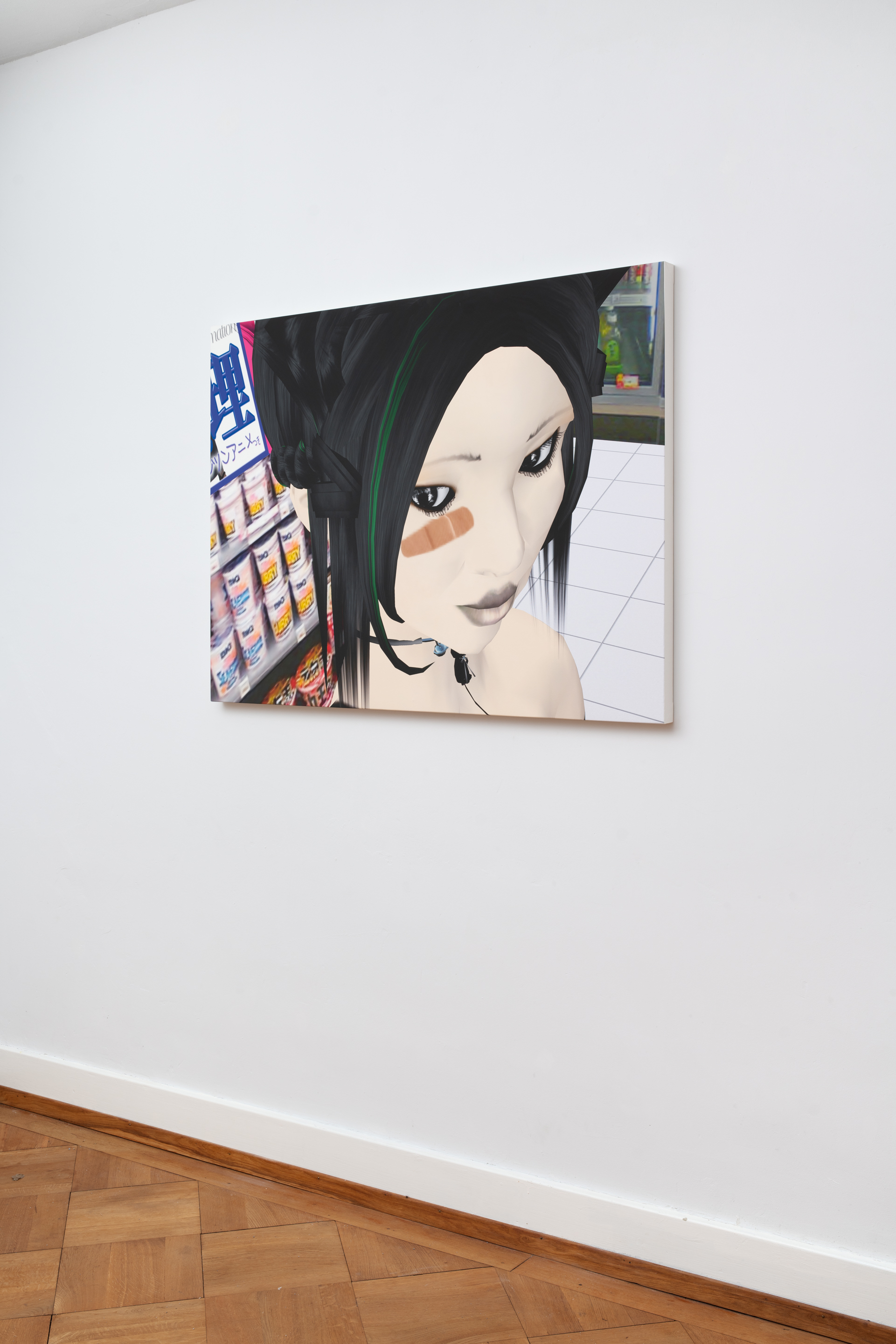
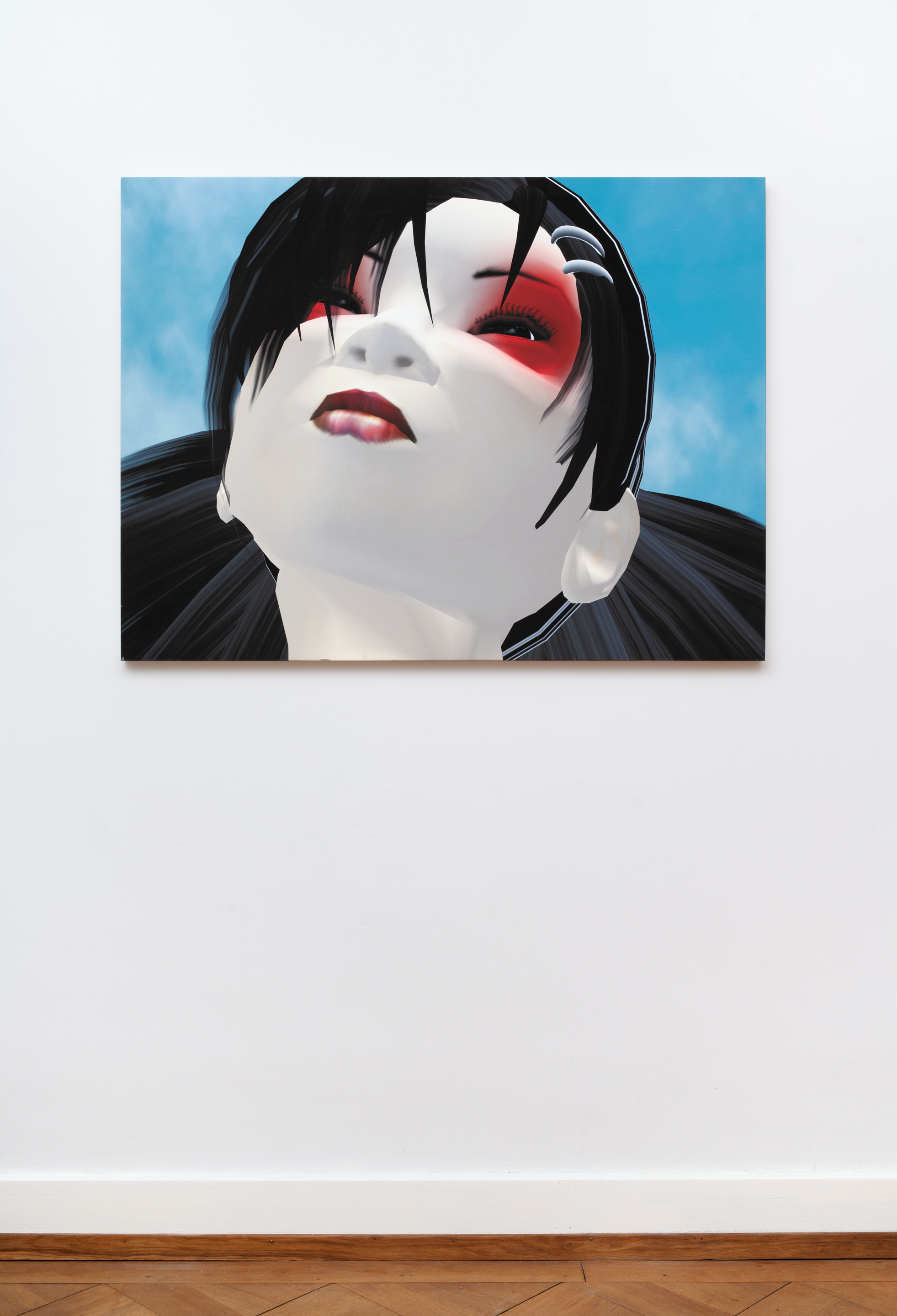
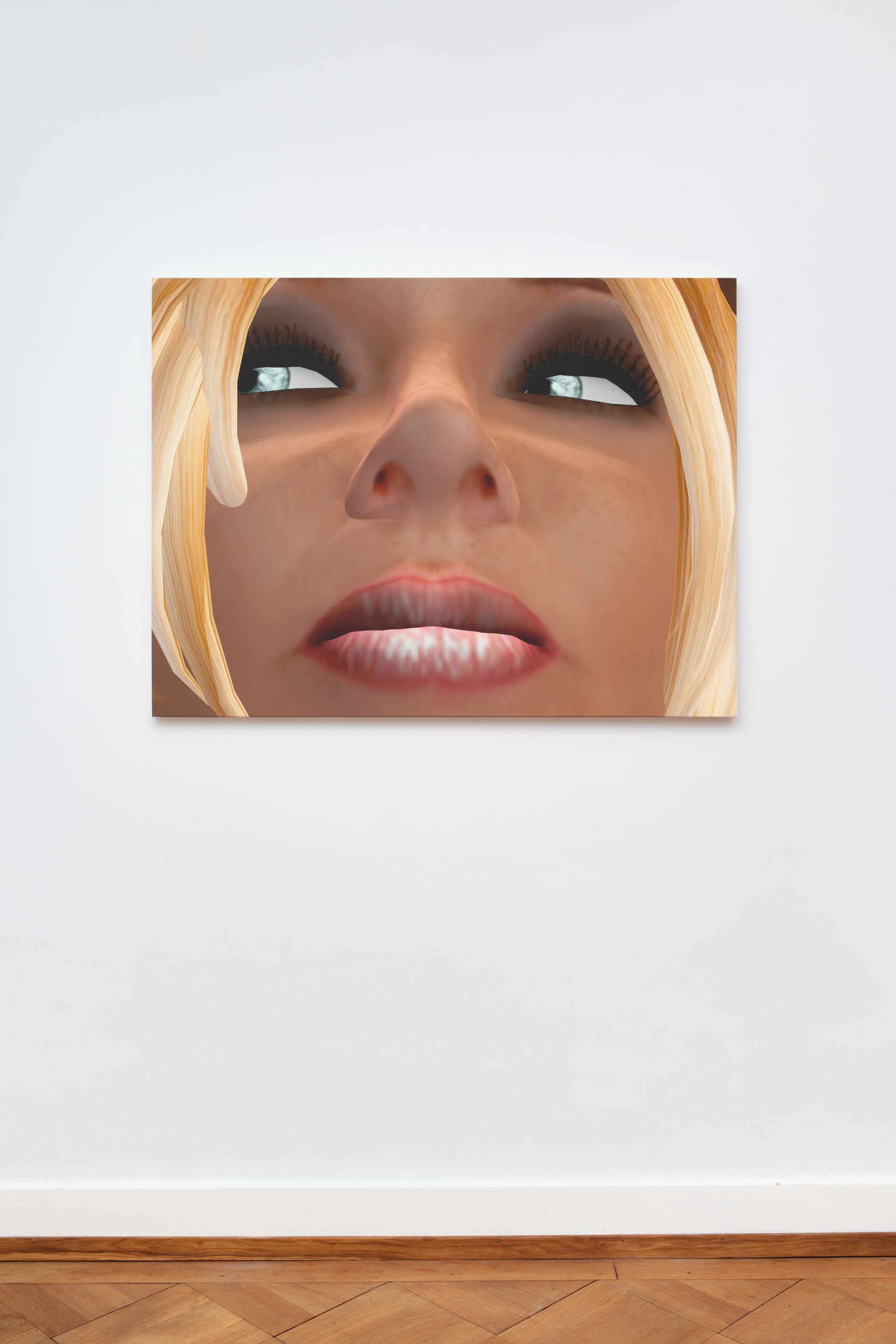
Clockwise from Top Left:
Planta Etzel, 2007
Digital print on canvas
91.4 x 121.9 cm
Ameshin Yossarian, 2007
Digital prints on canvas
91.4 x 121.9 cm
Lana Darrow, 2006
Digital print on canvas
91.4 x 121.9 cm
AnnoyingJapaneseChild Dinosaur, 2007
Digital print on canvas
91.4 x 121.9 cm
Portraits (2005) finally, is another piece made in a video game. The Matteses spent a year in Second Life, wherein they owned a virtual island to which they invited other online presences, whom they offered to photograph. The results are portraits that potentiate the tension between intimacy and voyeurism inherent to portraiture as a genre, and give insight into what preservation and preciousness look in the digital age.
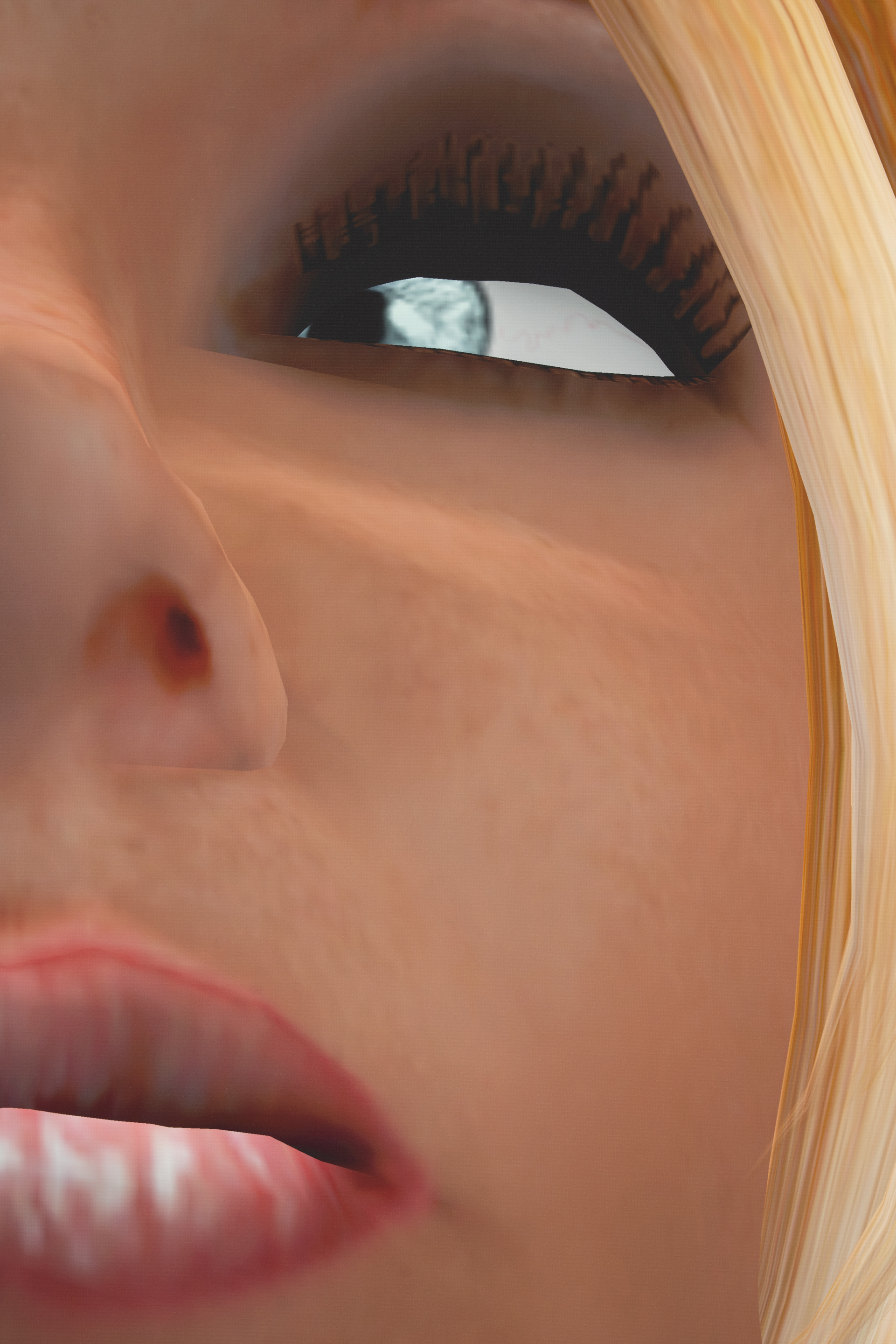
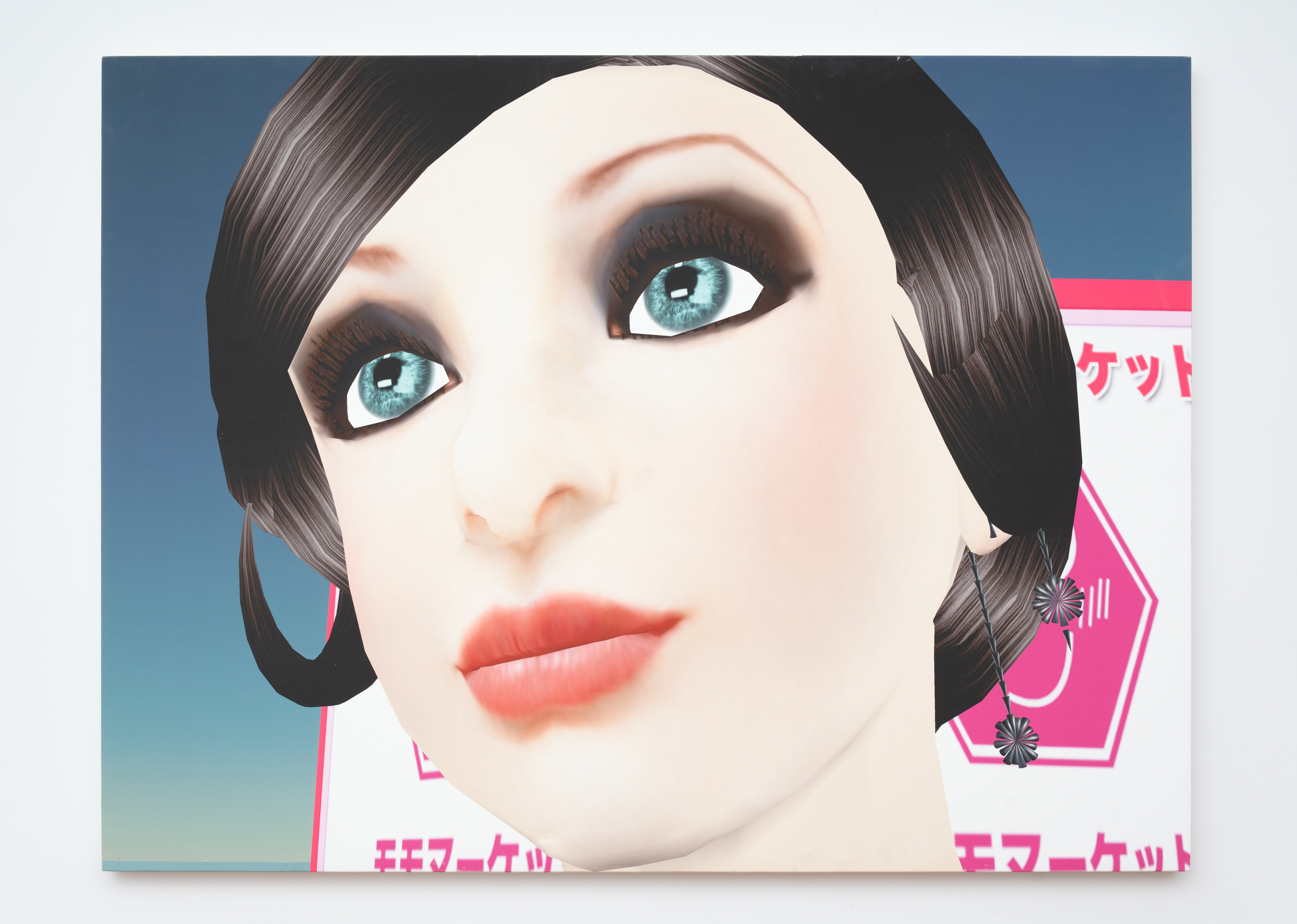

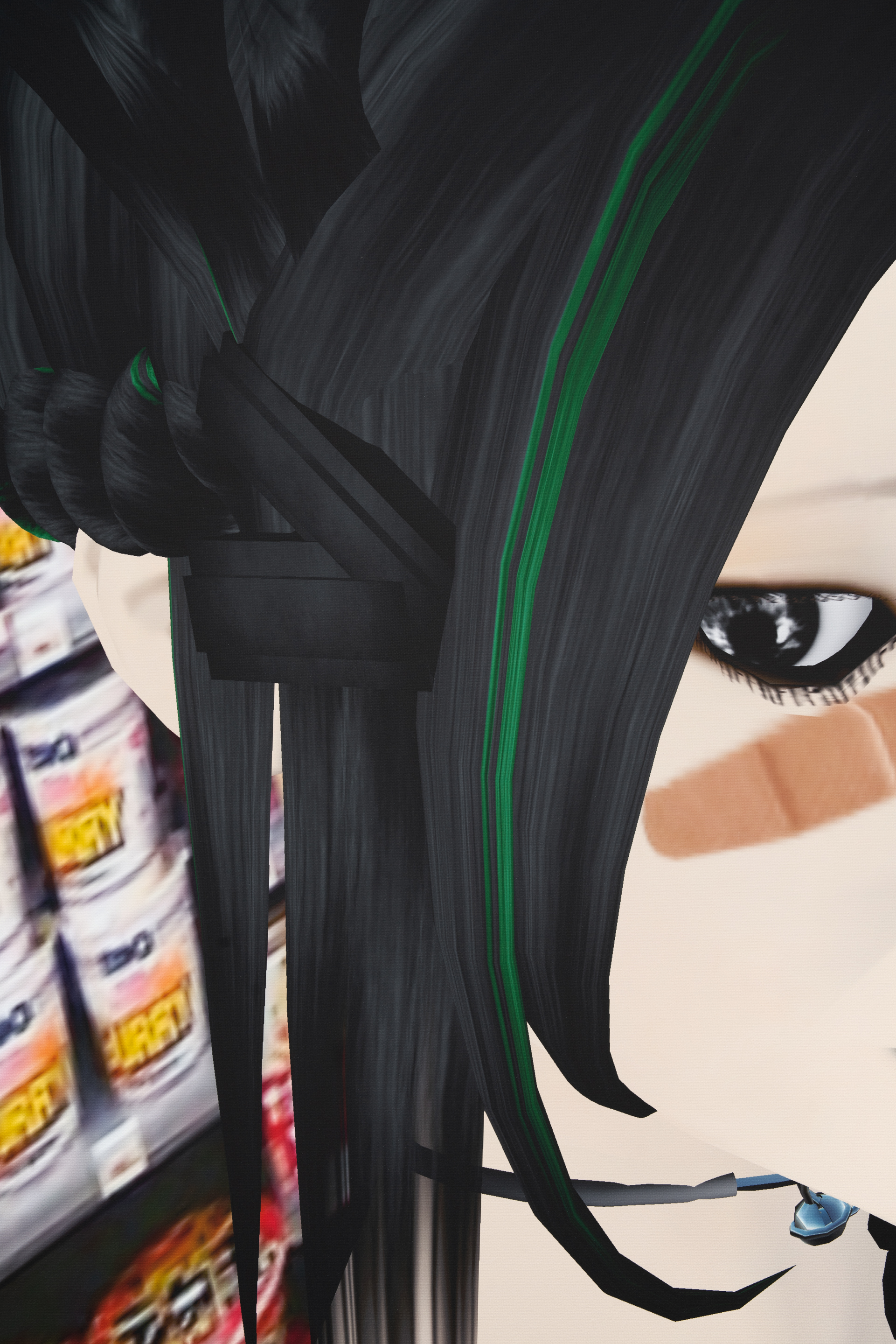
**Chêroux, Clément. 2021. Catopic according to Eva & Franco Mattes. In Eva & Franco Mattes: Dear Imaginary Audience. 2021.
***Melville, Herman. 1856. Bartleby the Scrivener. In Piazza Tales.
https://moglen.law.columbia.edu/LCS/bartleby.pdf
https://moglen.law.columbia.edu/LCS/bartleby.pdf